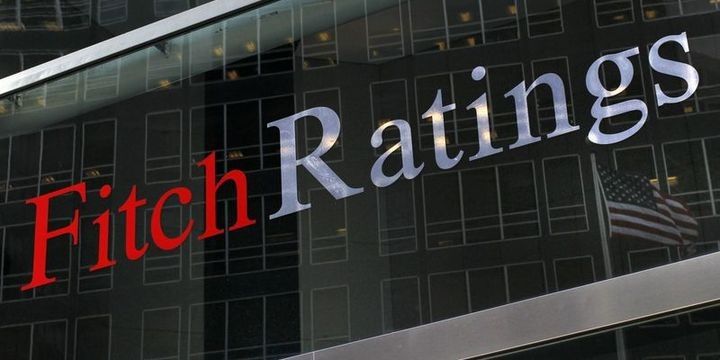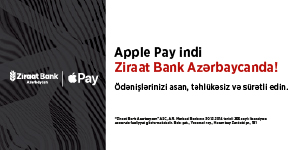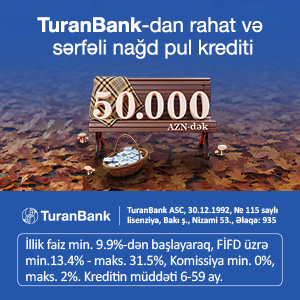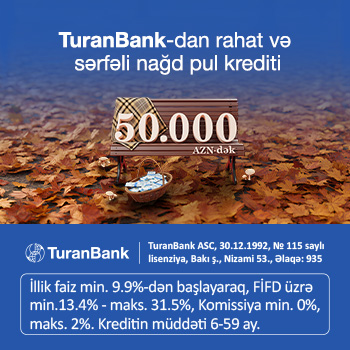"Fitch" Azərbaycanın bank sisteminə qiymət verdi - DOLLARLAŞMA HƏLƏ DƏ YÜKSƏKDİR

"Fitch Ratings", "Azərbaycanın bank sektorunun sabitləşdiyi görünür. Amma hələ də yüksək səviyyədəki dollarlaşma (yerli pul vahidi əvəzinə ABŞ dollarının başlıca olaraq istifadə edilməsi) bankları yerli valyutadakı dəyər itkisi qarşısında həssas vəziyyətdə qoyur" açıqlamasını edib.
Beynəlxalq kredit reytinqi agentliyi "Fitch Ratings", Azərbaycanın bank sisteminin sabitləşdiyini, amma ölkədə dollarlaşmanın hələ də yüksək səviyyədə qaldığını bildirib.
"Marja" xəbər verir ki, Agentlikdən verilən açıqlamada, "Azərbaycanın bank sektorunun sabitləşdiyi görünür. Amma hələ də yüksək səviyyədəki dollarlaşma (yerli pul vahidi əvəzinə ABŞ dollarının başlıca olaraq istifadə edilməsi) bankları yerli valyutadakı dəyər itkisi qarşısında həssas vəziyyətdə qoyur",- ifadələrinə yer verilib.
Açıqlamada, bank sektorundakı kreditlərdə və əmanətlərdə yerli pul vahidindən xarici pul vahidlərinə doğru olan meylin son illərdə daha az olduğu, lakin dollarlaşmanın azalmasına baxmayaraq hələ də yüksək səviyyədə qaldığı qeyd olunub.
TƏK ŞƏXSİYYƏT VƏSİQƏSİLƏ 15 DƏQİQƏYƏ KREDİT!
2015-ci ilin sonunda bankların cəmi kreditlərində xarici valyutadakı kreditlərin payının 49 faiz səviyyəsində olduğu, bunun ötən ilin sonunda 38 faiz səviyyəsinə gerilədiyi vurğulanıb.
Yenə eyni dövrdə yerli valyutada tətbiq edilən yüksək faiz səbəbilə banklardakı cəmi əmanətlərdə xarici valyutanın payının isə 82%-dən 65% səviyyəsinə gerilədiyi qeyd edilib.
Fitch Ratings: Azerbaijan Banking Sector Stabilising; Dollarisation Still High
Fitch Ratings-Moscow/London-17 April 2019: Azerbaijan's banking sector appears to be stabilising, but still-high dollarisation leaves banks vulnerable to local currency (LC) depreciation, Fitch Ratings said at its eighth annual conference on Azerbaijan in Baku this month.
Loans and deposits are less skewed to foreign currency than in recent years with foreign currency (FC) loans standing at 38% of total loans at end-2018. That's down from 49% at end-2015 due to banks' tighter underwriting since devaluation of the manat. Over the same period, FC deposits declined to 65% of total deposits, down from 82%, a consequence of higher interest rates on manat deposits than on those in foreign currency. The regulatory net open short foreign-exchange position improved to USD0.9 billion at end-2018 from USD1.4 billion at end-2017.
However, deposit and loan dollarisation are still relatively high. Deposit dollarisation remains among the highest in the region, constraining banks' ability to extend LC loans. High loan dollarisation exposes banks to asset-quality deterioration in the event of further manat depreciation, which would put pressure on borrowers. About 16% of FC loans were overdue at end-2018, compared with about 10% of LC loans.
The government is finalising a mechanism to support retail FC borrowers, which should reduce the proportion of overdue FC loans. The state will cover some of the extra burden caused by the weaker manat for retail borrowers where payments are more than 360 days overdue. As part of this mechanism, banks will offer to restructure overdue FC loans, extending tenors to five years with a one-year grace period, lowering interest rates to 1% and switching loans to local currency. The Central Bank of Azerbaijan is expected to provide funding for this with a 0.1% interest rate, up to a maximum of AZN682 million (USD400 million).
Non-performing loans (overdue by more than 90 days) moderated to 15% of gross loans at end-2018, down from 21% at end-2016, and reserve coverage increased to 81% from 51%. These improvements were largely due to the transfer of problem assets from International Bank of Azerbaijan to a state-controlled non-bank entity. But stabilisation of asset quality and a return to loan growth in 2018 also contributed. We expect that the non-performing loans ratio will moderately decrease once the support mechanism for retail FC borrowers is launched. However, non-retail FC non-performing loans are also significant, as are restructured exposures. The latter, which we estimate account for 15%-20% of gross loans, may need more provisioning.
Capital ratios are among the highest in the CIS and Georgia region. Common equity Tier 1 ratio was 15% on average while the total capital ratio was 19% at end-2018. However, capital strength is unevenly distributed and several banks have weak or vulnerable capital positions despite these high sector-level capital ratios.
Our outlook on Azerbaijan's banking sector is negative, reflecting downside asset-quality pressures in banks' highly dollarised balance sheets, modest financial performance, particularly if adjusted for uncollected accrued interest, and capital pressure at some banks. However we believe this can stabilise if there is further asset quality improvement and a continued decrease is dollarisation, trends which should be supported by the assistance to retail FC borrowers.
Müştərilərin xəbərləri

500-dən artıq müraciətdən 20 layihə seçilib, 10 layihə finala çıxıb - “Bizdən Biznesə”nin qalibləri seçildi

Bayram günlərində 12 bankın 60 satış nöqtəsi, 68 poçt şöbəsi və valyuta mübadiləsi məntəqələri xidmət göstərəcək - SİYAHI
SON XƏBƏRLƏR
- 5 saat sonra
- 3 saat sonra
-
7 d. əvvəl
İşğaldan azad edilmiş ərazilərdə daha 3 Radio-Televiziya Yayım Stansiyasının işi bərpa edilib
-

- 17 d. əvvəl
- 38 d. əvvəl
- 11 saat əvvəl
-
15 saat əvvəl
ARDNF-in investisiya portfelində qızılın payı 35 %-ə çatdırılacaq
-
15 saat əvvəl
Bank of Baku istiqrazları üzrə ilk kupon ödənişi həyata keçirilib
- 15 saat əvvəl
- 15 saat əvvəl
-
15 saat əvvəl
Prezident İlham Əliyev “Bakı Ağ Şəhər”də həyata keçirilən işlər ilə tanış olub - FOTOLAR, YENİLƏNİB
-
15 saat əvvəl
İqtisadi Zonaların İnkişafı Agentliyinin Müşahidə Şurasının iclası keçirilib
Son Xəbərlər

Biznesiniz üçün QISA NÖMRƏ (Ulduz nömrə) alın

Azərbaycanda Vakansiyalar - Azvak.az

Rəsmi məzənnələr açıqlandı

Monteneqro Azərbaycanla vizasız rejimi ləğv edir

ARDNF-in investisiya portfelində qızılın payı 35 %-ə çatdırılacaq

Şuşa Bank və Sığorta Binası tikilib

Ötən ay təyin edilən icra başçısı işdən çıxarıldı
Ən çox oxunanlar

Prezident İlham Əliyev “Bakı Ağ Şəhər”də həyata keçirilən işlər ilə tanış olub - FOTOLAR, YENİLƏNİB

Dolların sabah üçün rəsmi məzənnəsi müəyyən olunub

Avropa Yenidənqurma və İnkişaf Bankının istiqrazları üzrə ilk kupon ödənişi həyata keçiriləcək

“McDonald’s Azərbaycan” Yeni Yasamalda restoran açdı - FOTO

Dekabrın 29-da gözlənilən hava şəraiti - XƏBƏRDARLIQ
























